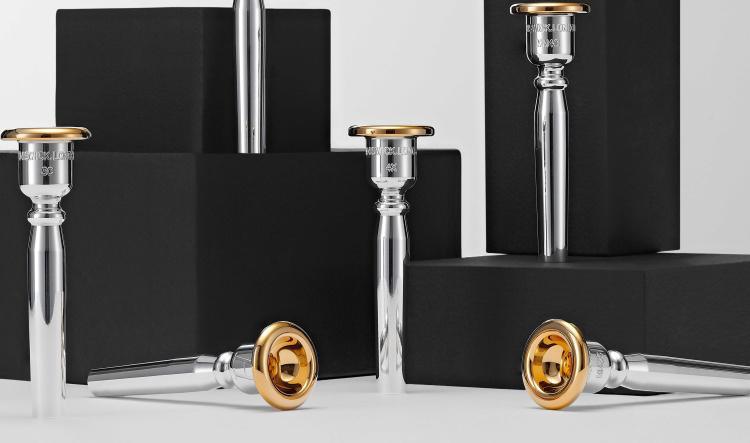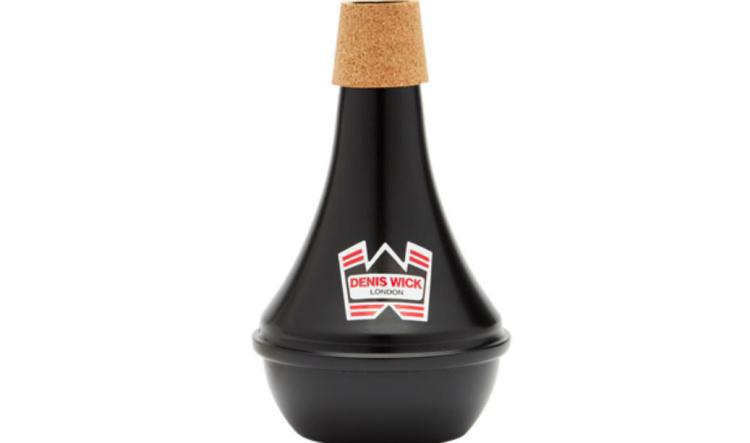When searching for a new mouthpiece, what factor leads your decision?
What is the right answer! For me, I always let sound lead. Are you ready for the big HOWEVER?
What is the right answer! For me, I always let sound lead. Are you ready for the big HOWEVER?
What beginner mouthpiece sizes did our Denis Wick Buzz commnunity use as young musicians? While there is a lot of variety scattered throughout, standards like the 7C for trumpet and 12C for trombone were the most popular. If you're curious, see the complete list here.

The rim of the mouthpiece has a large effect on comfort. In addition to comfort, the contour of the rim does have effect on your performance flexibility between partials and range. Before we answer this question, let me preface this that all statements about what a mouthpiece will or won't do for you are merely a place to start. If you want support in your range, you might look towards finding a smaller diameter or shallower cup. However, after trying a smaller shallower mouthpiece, you may find that you actually prefer a smaller diameter with a deeper cup, or wider diameter with a shallower cup... or none of the above! Based on the sound you want to create, your facial anatomy, and a host of other variables, you may not fit solidly into a mouthpiece "rule of thumb" but having a place to start your search is key.
When we think about cup depth of a brass instrument mouthpiece, we generally think about how they will affect the sound. Generally, a large cup will provide a dark sound, where a shallow cup will produce a brighter more projecting sound. Is sound the only thing that the cup affects, though? We recently polled our Denis Wick community with this question: Does the cup depth affect articulation? Each player is different, and while we here at Denis Wick have some specific ideas about how the right cup contour can assist your performance, we also realize each player has their own experience with this, and feels support from a mouthpiece in different areas.
Learn about what triggered Denis Wick to #transform2perform throughout his life as a student, teacher, performer, and manufacturer in this interview with denis, hosted by Ian Bousfield.
As every teacher knows, a good tone on any brass instrument needs a properly set-up embouchure; these days one may assume that the young player will have a reasonable instrument and a sensible mouthpiece. To this one could add what many teachers would regard as the most important of all – good breath control.
Reflecting on the many discussions I’ve had, I’ve come to realize that there is a moral code to trying
Your mouthpiece is a relationship of measurements, joined together to support you. Understanding the terminology and relationship is key to finding the right mouthpiece.
Directing your customer to make a choice in 4 easy steps:
In this #transform2perform interview with Christopher Bill, Chris discusses the power of practice we learn as a musician, and what that has taught him, for better or for worse, in his career.
Over the last month we conducted a surey of how many different mouthpieces one musician might use. Do you use the same mouthpiece on everything you play, or do you have multiple different mouthpieces to accomplish different styles of playing on the same instrument. Since there is no right or wrong answer to whether you should play one or multiple, we reached out to you to get your thoughts. Here are our finding.
Get a tour of the Denis Wick factory and a peak into how Denis Wick creates performance ready mouthpieces and mutes for beginner to professional brass musicians.

Heritage mouthpieces carry the mass of the mouthpiece in the lower region of the cup which provides the focus of a HeavyTop mouthpiece. To compensate the extra weight in the cup, Denis Wick thinned out the upper walls of the cup and underparts of the rim. This creates one of the most responsive and projecting mouthpieces you will ever try. They share sizing with the American Classic 1.5C & 3C, the Maurice Murphy 2C and 4C, and Classic 4X and 5X. What are those sizes? Find out below.

What is the best way to find a new mouthpiece? Here are some great tips from Denis Wick Artist Paul the Trombonist.
The Heritage mouthpiece for Trumpet is Denis wick's newest installment to a long list of amazing tone-producing products for trumpet players. Both the HeavyTop and Heritage utilize additional mass to provide focus to the sound, but in much different ways. While the HeavyTop provides extra mass throughout the mouthpiece, the Heritage localizes the mass of the mouthpiece to the base of the cup, and then thins out the upper walls and rim to add sparkling projecting and response to a focused foundation. Check out Denis Wick Artist Victor Haskins in this demo of both mouthpieces to get a better idea of what both can do.
If you haven't checked out Denis Wick Artist Josh Rzepka's "Mute Mondays", this episode is the one you want to start with. Josh will take you through details about the mutes and perform excerpts on them back to you so you can not only learn about, but actually hear the subtle differences between the mutes.
The Classic 4AL has a lot going for it. It's diameter, rim contour, and backbore combine together to provide a full low register with a big, dark sound. It is probably a little big for a beginner but, if you step-up to this model, this very well may be the last mouthpiece you have to buy. It works great for both classical and jazz, and will support you through every other style of music you may encounter. Here are the details:

Try these sound improving tips now! Did you know that quiet practice was only a side benefit, but not the main purpose of the Denis Wick Practice Mute? Denis actually created it to be a practice tool that could be used for opening up a player’s throat for breathing, broadening the tone, and helps fix a host of other playing issues as well. Here are 5 ways you can use the mute to improve your playing this week.
How did you go about teaching yourself the transition from Trombone to Tuba?
When you search for a mouthpiece, what measurements do you look toward to make sure you will find the perfect fit? Our suggestion is to always start with diameter. From there you might look at cup contour (B cup, C cup… shallow or deep?) or rim width/contour. The sizing you will see on nearly every mouthpiece manufacturer’s website is diameter, rim width, throat, and backbore. Each of these measurements will give you an idea about what level of comfort and support the mouthpiece will offer your individual needs.
The 10CS is renowned as one of the best jazz trombone mouthpieces around today. How did it originate? Amazingly, it started life as a mouthpiece for the alto trombone. Denis Wick recalls “I originally designed it for my old German alto trombone, which was made by Lätzsch. The alto trombone was rarely used in London, and I remember having to make a journey to Dover to collect the new instrument sent from Bremen in order to pay the duty. It had been illegal to import foreign instruments, but the Board of Trade lifted this embargo in 1958 and I bought the Lätzsch shortly afterwards. A few years later Yamaha in Japan borrowed it from me when I was on tour with the LSO and made a copy which was actually much better - they gave me the copy! I had to design a mouthpiece which would make the kind of sound that I wanted. The tone quality with the very small mouthpiece supplied with the instrument was terrible! Designing a mouthpiece for the alto is difficult – the tolerances are…